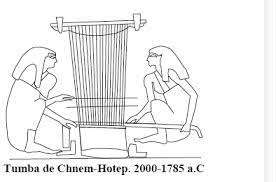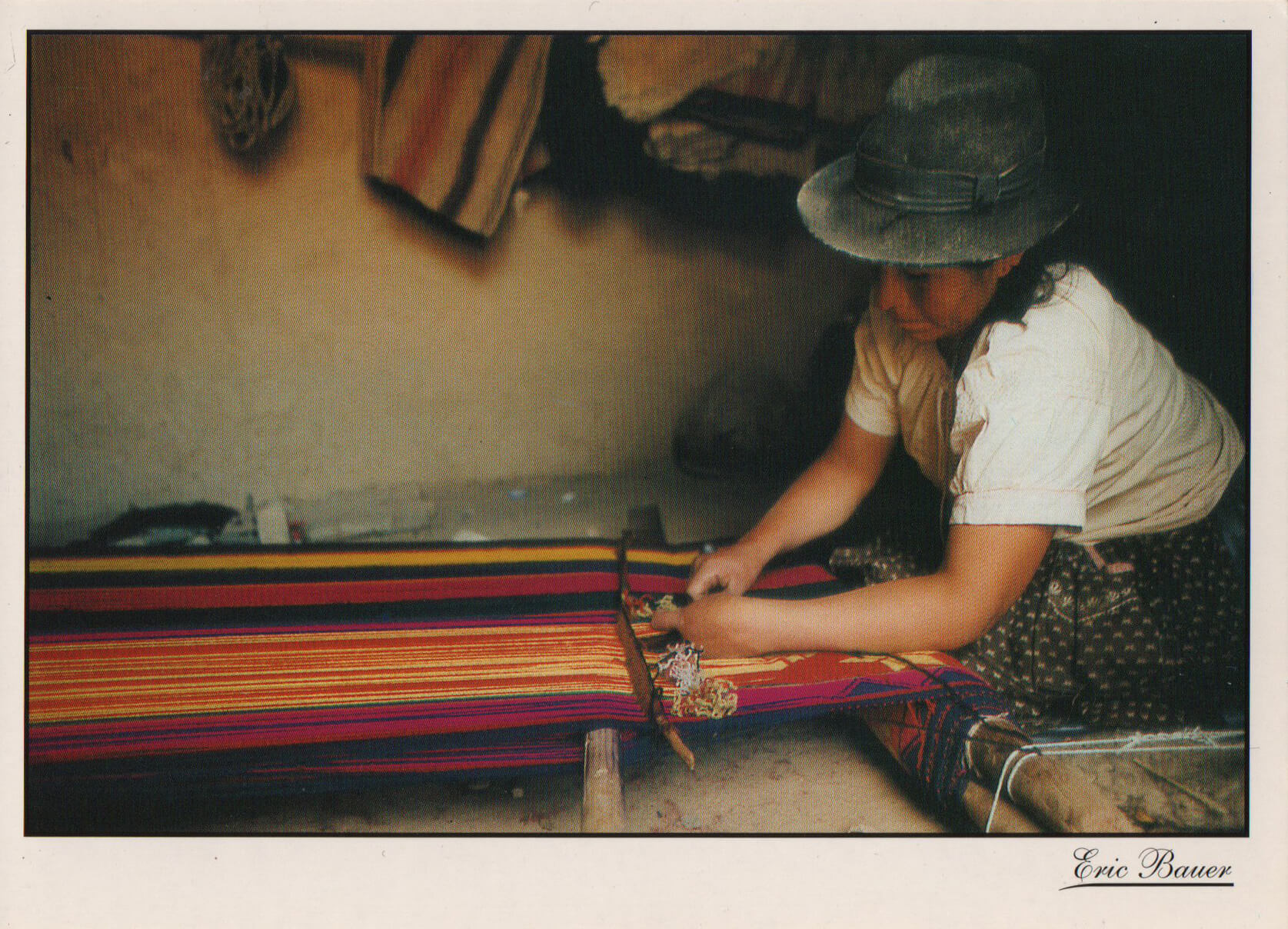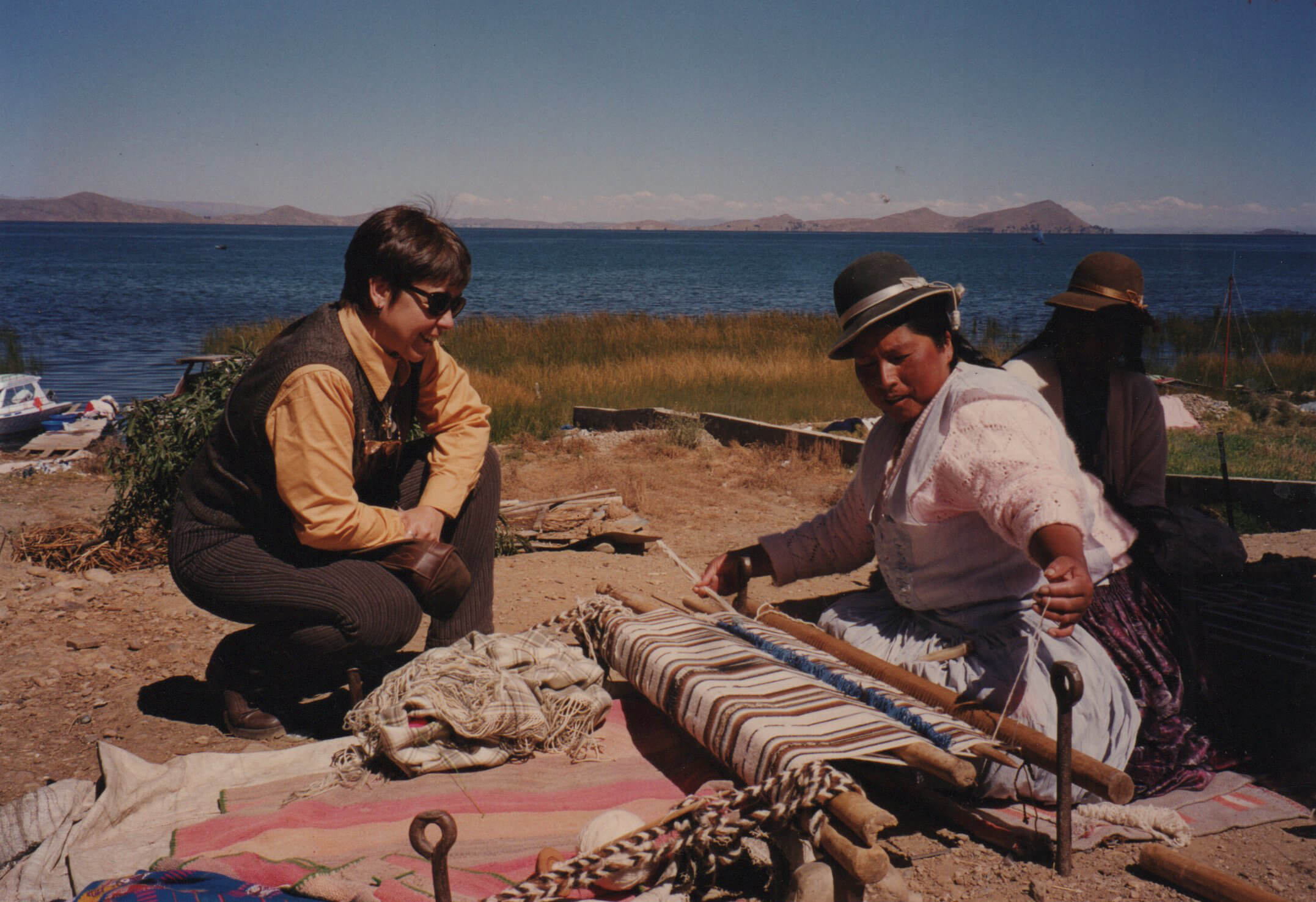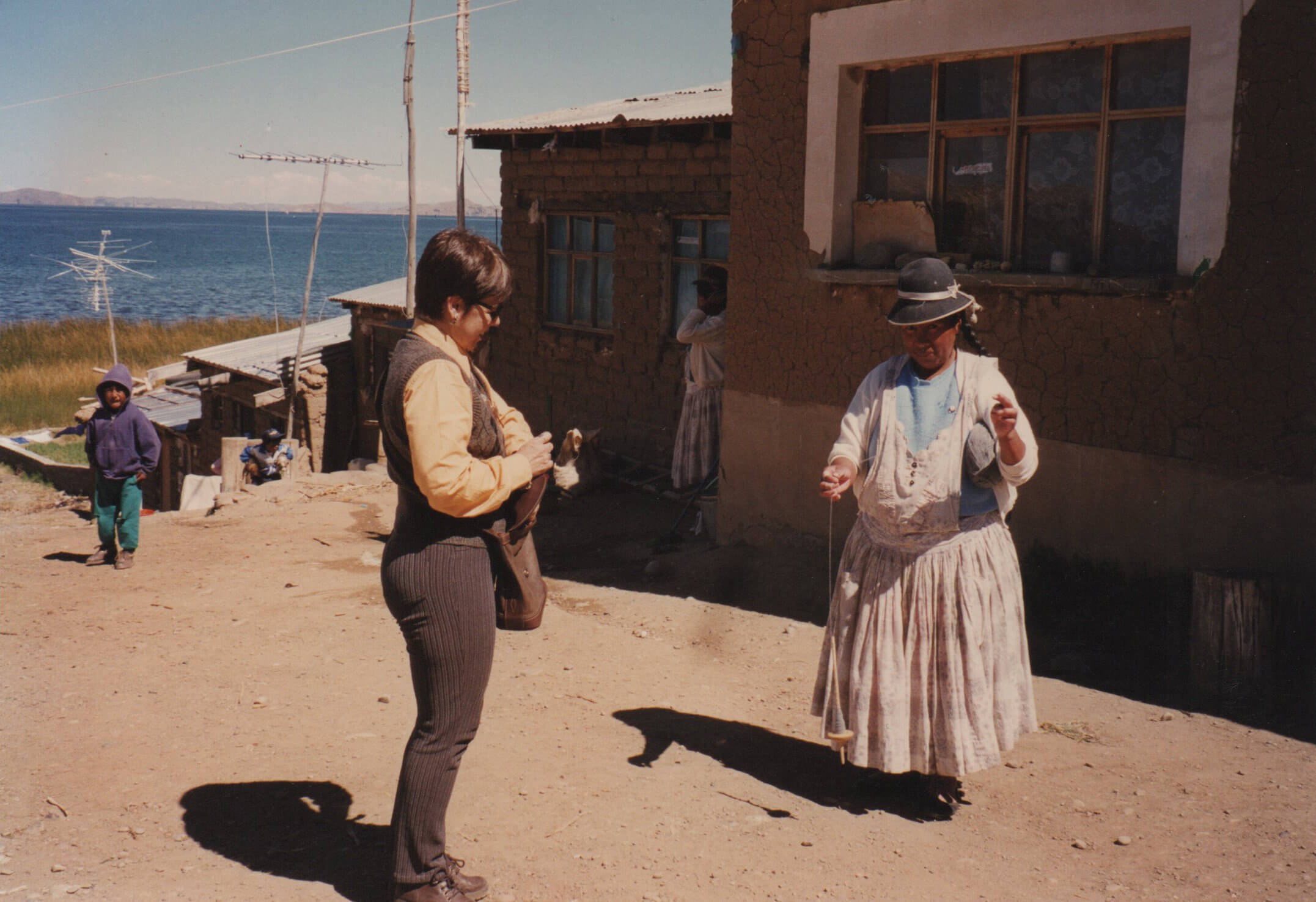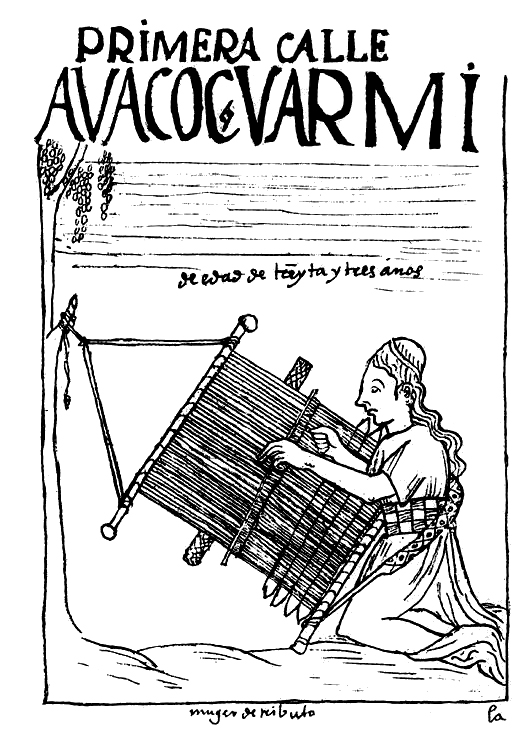To talk about loom weaving, born after the knotting of fibers and basketry, we have to clarify the concept of warp and weft. Agreeing that the warp is made up of the fibers or threads stretched in parallel, held in tension, and the weft threads which will intertwine with the warp threads running transversely to it, the warp will be the ground where the weft will walk.
While in Chinese culture the warp is considered as the immutable forces of the world, the weft is defined as the events that follow one another tracing the life and destiny of the individual. Something similar is said in India, referring to the warp as the external existence and the weft as the stages that make up the biography of a man.
We can then define the loom as the element that allows the warp to be kept in tension in order to introduce the wefts, which cross it, and the weave as the result of recurrently crossing those weft threads. This interlocking, the product of inserting the wefts between two parallel warp threads, was made primitively with the fingers, but, according to archaeological documentation, we will see that it was soon replaced by healds, which are nothing more than accessory threads tied to the warp, previously assembled in pairs, in order to form two planes that -pulling those healds- rise and fall in each pass, trapping the weft.
It is precisely the stake loom, also called a floor loom, the simplest structure known. Four stakes are driven firmly into the ground to form the vertices of a rectangle and there the crossbars are adjusted to keep the warp taut, which is almost touching the ground.
Although the first reference to a loom comes from Anatolia, from Catal Huyuk -perhaps the oldest city in the world, during the Neolithic period, about 6000 years BC-, there is no reliable evidence that it was a floor or vertical loom. On the other hand, we can demonstrate the use of the stake loom in Egypt, documented by the discovery of its representation in a ceramic vessel found in Badari -whose date is estimated at 5000 years BC- and in a mural from the tomb of Kumhotep in Beni Hasan, from the 12th dynasty, around 2000 BC.
In the graphic decoration of the vessel, the taut warp, attached to two bars, can be seen in detail; a woven part, three lines perpendicular to the warp that could represent two healds and a shovel to tighten the weft, while in the mural, two weavers work on the same loom: one activating the healds and the other, with a shovel, adjusting the plot after pass.
Making a brief classification of the looms, we can divide them into vertical, oblique and horizontal. As is clear, the stake belongs to the latter category, sharing it with the backstrap loom, where -at the end of the beginning of the weaving- the stakes are replaced by the weaver's body, which keeps the warp taut by means of a wide strap that, tied to each end of the crossbar, surrounds the back of your waist. In this, the artisan must absolutely wrap the resulting fabric by using an accessory "wrapping" stick. Sometimes, on the stake loom, the weaver sits on the fabric already woven as she advances through it, while on other occasions she chooses to wrap the fabric on the proximal crossbar or aided by another proximal stick "wrapping”. In the latter case, tie the ends of the distal crossbar to the stakes with a thick wool rope and the rope will lengthen as the craftswoman approaches the end of her work.
In the Old World, the geographical dispersion of the floor loom was very wide in Central Asia and Africa, especially among nomadic tribes, given the simplicity of its assembly and the ease of transporting the warp wound on the crossbars. In America, while the backstrap loom predominated in Peru (verifiable in the drawings of Guaman Poma de Ayala), the ground loom settled in Upper Peru, today Bolivia, inheritance of the Aymara culture, although sharing domicile with oblique looms and still waist. Moreover, for several centuries it also did so with the European pedal looms brought by the Jesuits.
The first textile factory established by the Society of Jesus dates back to 1545, only five decades after Columbus arrived on American soil, it was organized in the town of Sapallanga, located in the Jauja Valley, Peru. From that founding landmark they extended their textile activity to all of Spanish America until 1767, the year in which their expulsion was decreed. (1) The factories were mostly abandoned, and those that maintained their activity under the direction of lay people were definitively destroyed in 1781, during the indigenous uprising of Túpac Amaru II and Túpac Katari.
The technique of the Jesuits with their quasi-industrial mass production of ponchos using warps 100 yards long by 20 to 30 cm. wide, it was simple. Once the fabric was removed from the wrapper, four or six strips were cut to the desired length, these cloths were joined, they were hemmed at their ends and a perimeter fringe was applied, but these looms were operated by men for the most part. The women continued weaving on their stake and “four-edged” looms, that is, weaving the piece without cutting the yarn, of the desired length and width and weaving from the beginning of that warp to the end. Once one half was completed, whose width could not exceed 85 cm, which was the maximum width that the weavers could operate, they proceeded to weave another fabric with a "mirror" design and then join them with a central seam respecting the opening for the mouth.
Returning to the observation that the stake loom is -since the end of time- the one chosen by nomadic cultures, we could ask ourselves why the Quechua-Aymara ethnic group adopted it while being sedentary. It happens, in the first instance, that women take care of herding their llamas and alpacas, traveling long distances daily. During the walk they are spinning with their spindles, and when they arrive, they drive the stakes, stretch the warp and soon they are weaving. Second, the weaver works outdoors, as long as there is enough light, to roll her fabric at sunset, store it in her home, and resume the task the next day.
Making a rustic evaluation of the geographical dispersion of the different types of aboriginal looms, we can say that the simple vertical and oblique ones (two posts and two crossbars) are seen in limited areas of Bolivia, mainly in Potolo, Tarabuco, Sucre, Tarija, in the Oriente and in the Bolivian and Argentine Chaco. Going down the Andean corridor we see them in the Argentine Northwest, and arriving in the Argentine and Chilean South we find them with two accessory posts destined to hold the rod of the hedges, rods called in Mapudungun (Mapuche language), tononhué.
A curiosity -for being inserted in a territory frankly dominated by the vertical loom- is the horizontal loom of Quelgos, used on the Island of Chiloé, according to chronicles by Charles Darwin, recorded during his trip to Chiloé and Aysén, in 1834 and graphically documented by the illustrator Conrad Martens, also a member of the expedition commanded by Fitz Roy. Martens draws it and describes it as: four stakes firmly buried in the ground, forming the tension support of the two crossbars of the loom. These crossbars, called quelgos, are the origin of the name of this loom.
Among the traditional horizontals, we have already highlighted the majority use of the backstrap loom in Peru and that of the stake loom in all regions of the Bolivian highlands. Both, notable expressions of the Andean cultural heritage, heritage that transcends its materiality.
The verb weave (tejer in Spanish) comes from the Latin texere, a word used in the Roman era to refer to tying, knotting, joining, building, not only in the sense of the material but also in the intellectual. Attentive to this last assertion is that the term text comes from the same root.
For this reason, having before us a textile born on a stake loom we are in front of a text, a message of identity that will endure in the soul of that definitive union, -as Eastern thoughts say- between the warp: the external and immutable world, and the plot: the biographical document of a civilization.
To such an extent this appreciation is accurate that, in 2020, the Bolivian Senate declared the pampa away (floor loom), Cultural Heritage of Bolivia.
Note:
1. Enrique Taranto, Jorge Marí: Textiles for traditional use. Ed. Asoc. Criolla Argentina. Buenos Aires. 2000. Page 49.

